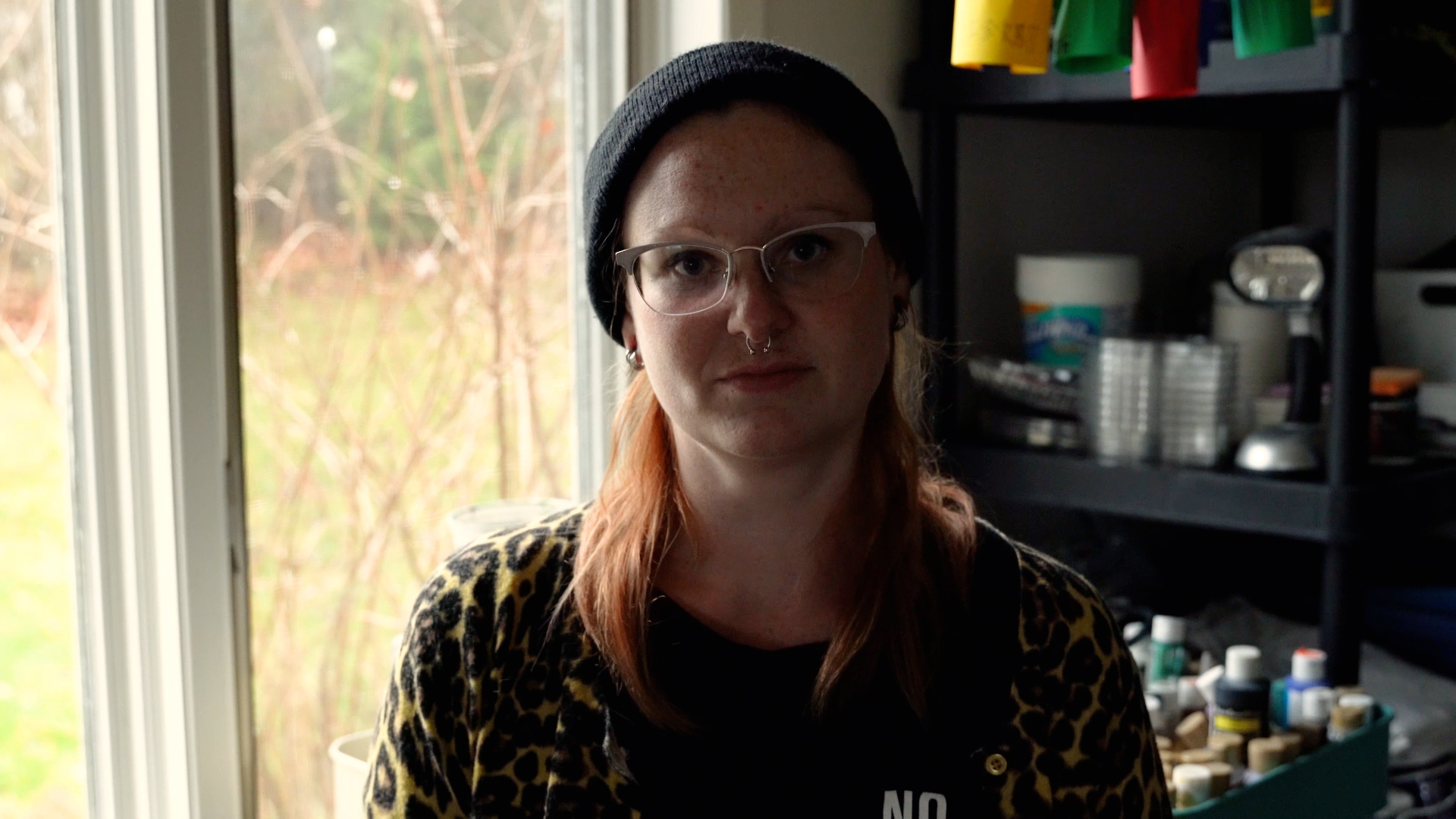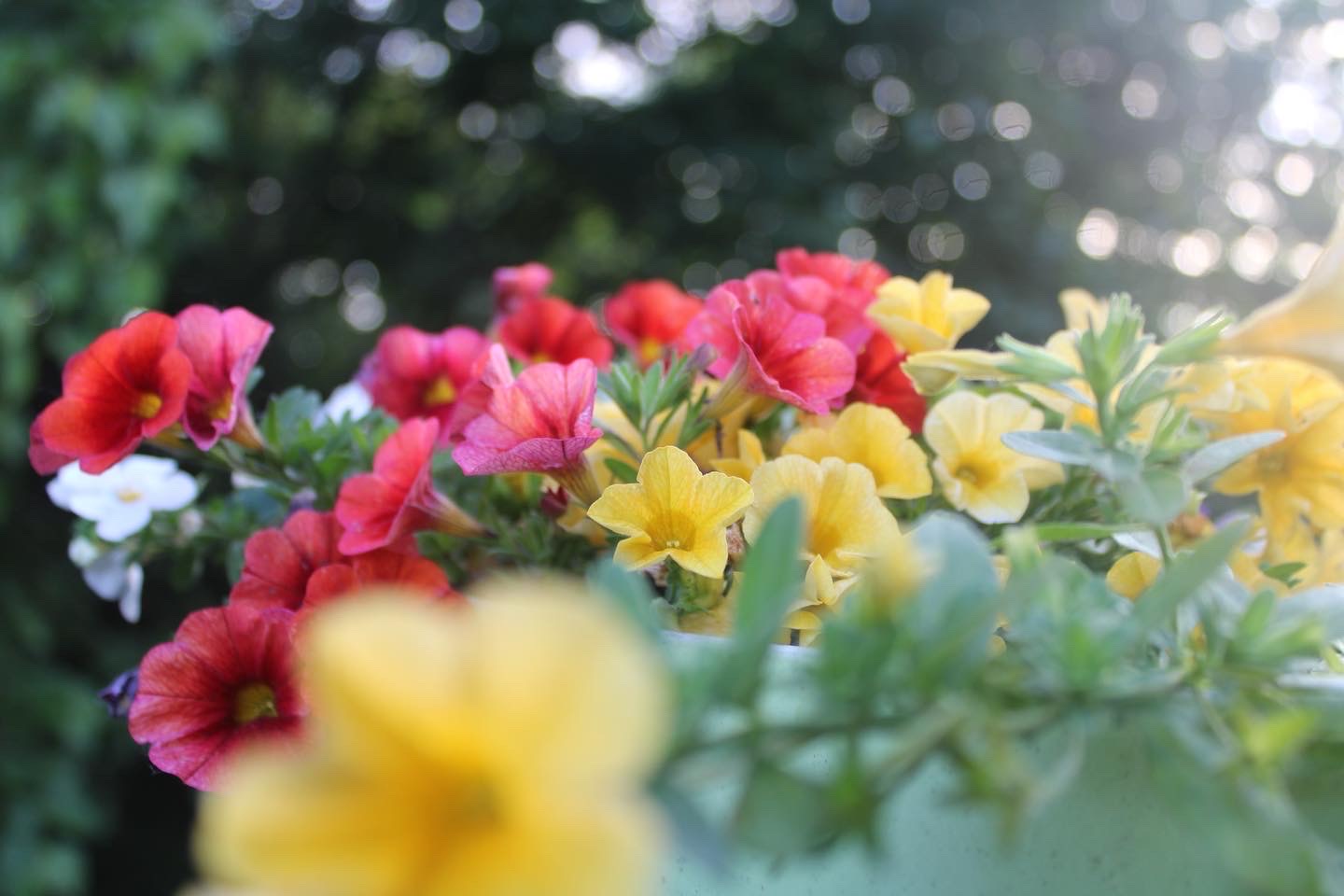Posts Tagged ‘writing.’
Lyss – Writing Songs and Words
Lyss – Writing Songs and Words
Lyss shares about how writing songs and words has helped her with intense feelings
Katie – Coping strategies
Katie – Coping strategies
Katie explains her coping strategies
Katie – Journaling
Katie – Journaling
Katie talks about grief triggers and mental health triggers
Tending to My Garden of Grief
By Taylor Bourassa, RP & Professional Art Therapist.
Losing a loved one –whether through death or the end of a relationship, brings up complex emotions, some of which are hard to process. The first major loss I can remember experiencing was when I was quite young and my grandfather died. I barely knew the man, but to this day we still share stories of his impact on my father, his son, my mother, his daughter-in-law, and us, his grandchildren. The memories bubble up slowly and play in my mind like a distorted movie playing on the television screen. It is part of my life I can’t quite recollect without the input of others. Then in my middle teen years I attended a funeral for my grandmother’s sister, and I remember watching the grief flood my grandmother’s face as she dissolved into tears and I wondered: how can I, or any one else hold this grief in the “right” way? How can any of us help ease that pain?
When I was 16 or 17, my cat, who I still recognize as my earliest best friend, developed cancer and needed to be put down. This was the hardest thing I had had to face at that point in my young life. I was faced with what seemed to be inconsolable grief. That same thought bubbled up: how can anyone ease this unbearable pain?
A few years ago I was faced again with the reality of our mortality on this planet Earth when my dog, Roxy, had to be put down due to ailing health and decline. That same question flitted through my mind. Now, at 29, and having faced multiple losses and deaths I finally have some semblance of an answer to that question. It isn’t straightforward, and it probably isn’t universal. But it feels appropriate for me: remember, honour and celebrate. The pain of these losses will more than likely be with me my entire life, until the day I die and pass the pain onto my loved ones left behind. So long as I remember the lives of those I have lost, honour their presence and impact on me and celebrate their spirit, they will continue to live with me and the pain will feel bearable. It will no longer stop me in my tracks. Instead, it will encourage me and propel me forward through the transmutation of that grief into something different, something more nuanced and fluid. I’d like to share a practice for processing grief which I have found to be especially helpful.
Reflect on person or pet that has passed on and write a letter to them. Use recycled, bio-degradable paper to write this letter, so that when you get to the end of this invitation and you plant your letter it will be taken back into the earth and soil.
Imagine the things you appreciate about this person, the memories you two share, the impact they have had on you, and anything you feel has been left unsaid or unexpressed while they were still living. Before you close and seal the letter, read it back to yourself and sit with whatever memories, feelings and thoughts come up. Allow the energy of this person to show up and sit with that felt sense of who they were. When you are ready, fill the envelope with your letter and the seeds of your choice: flowers, fruits or vegetables. Use the seeds which you feel best honours the person. Find a location that is both accessible to you and reflects a space of honouring and celebration. This may be a favourite shared space between the two of you, or a new spot you would like to crop out as a way to honour and remember them. Once you have found your spot, take your letter and your seeds and bury them in this spot. Eventually, the seeds you have planted will sprout and grow, changing the spot into a new gravesite garden. Soon, the biodegradable letter will also be gone, subsumed back into the womb of the earth and soil, feeding the land for the growth and propagation of the flowers you have planted. Maybe these flowers will remain only in the space you created, or, what is more likely, they will be spread on the wind and the legs of bees, and the beaks of birds until the grass beneath is forever changed, peppered with new and continuing growth.
What a beautiful way to honour the deceased: recognizing their continued impact on you and the world around you as they and their memory connects with and returns to the earth. I find this to be a helpful way to process my own grief because it allows me an embodied, tangible and somatic way of addressing, honouring and processing the grief held inside my body. The grief will always be there in some capacity, and now there is a space which I can visit and reflect. The heaviness and weight of the grief is no longer mine alone – the whole earth helps me to carry it. Grief is such a unique, yet universal experience. My own experiencing of grief is all I know for certain, and so I keep searching for answers. I hope that as you navigate your own grief, you can alleviate some of the weight by sharing the load with the natural world around you.
Mary S – The value of writing
Mary S – The value of writing
Mary talks about how much writing has helped inlcuding writing what her partner would have said
Valmy – Music for me and for others
Valmy – Music for me and for others
Valmy talks about music she has created around her loss and how it helps her connect with others
Rebecca – Humour and grief
Rebecca – Humour and grief
Rebecca talks about how she and her father used humour as a strategy during his illness and after he died
Maureen – “Our 20th Anniversary”
Maureen – “Our 20th Anniversary”
Maureen talks about she dealt with her miscarriages and how she felt after 20 years.
Maureen – “Unresolved conflicts”
Maureen – “Unresolved conflicts”
Maureen shares about her Dad, anger, love and some tools to manage unresolved conflicts.
Tenille Campbell- “We Matter Campaign”
Tenille Campbell- “We Matter Campaign”
Tenille discusses her loss and how writing helps with her hurt.
Margaux – “Find People in Similar Situations”
Margaux – “Find People in Similar Situations”
Margaux talks about group therapy and writing as tools for processing grief. Margaux continues to grieve the death of her mother from breast cancer.
Shawn – “Dad”
Shawn – “Dad”
Shawn describes finding out his father died by suicide and the shock and grief that followed. Shawn continues to grieve the death of his father by suicide


